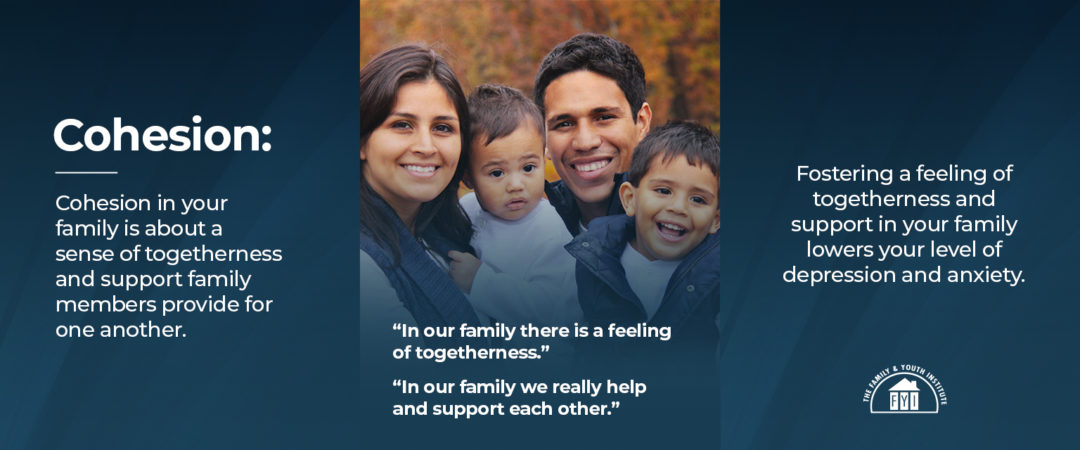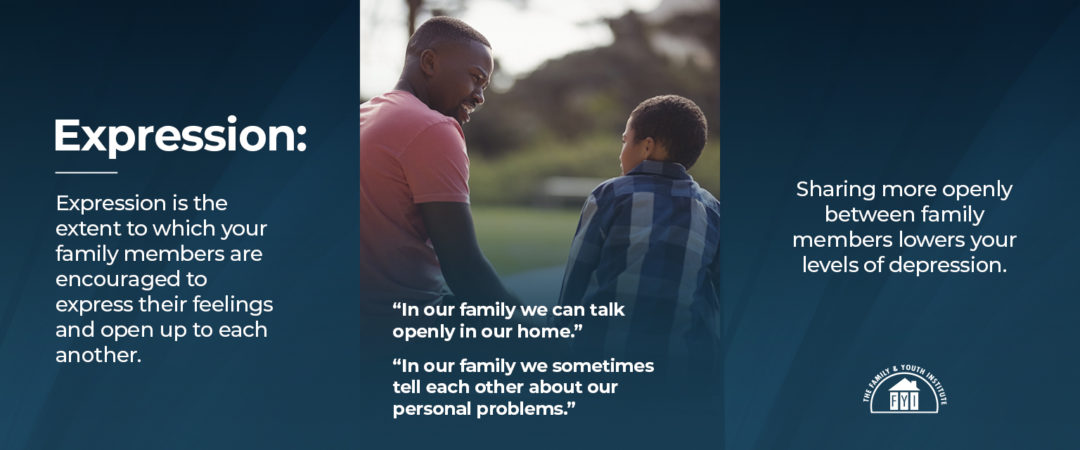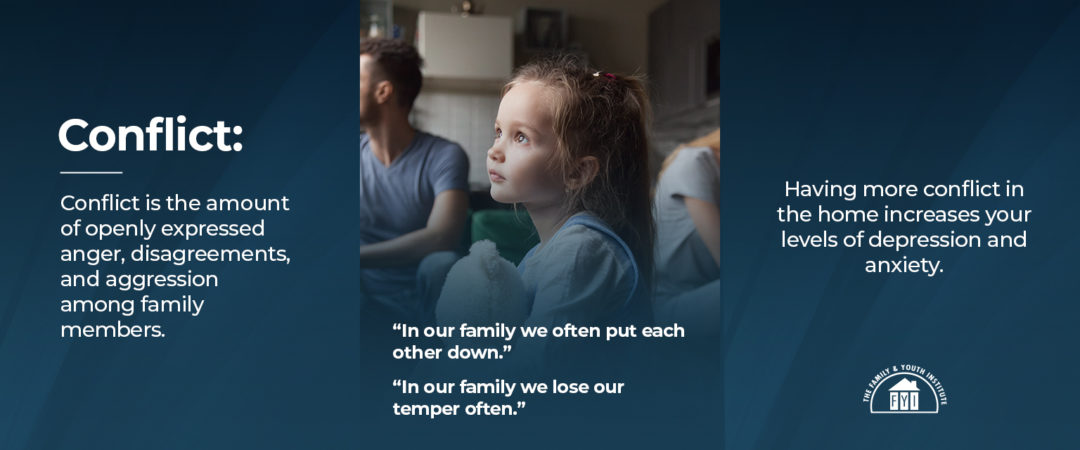
Do you ever wonder how you can be a better parent? What about having a more positive environment at home? In this article, we present findings from The Yaqeen Institute’s survey on the home environment and mental health. We conclude with strategies that you can implement in your home to improve your family’s mental health and well-being. Written by Madiha Tahseen, PhD and Issra Killawi, BA.
Sign up here for more resources like this
You may have heard about how your physical environment impacts your mood–things like the lighting, organization of the space, and clutter can all make you feel better or worse. But, have you thought about how the non-physical part of your home environment – the feelings in the air, support or conflict you experience, relationships with family members – can have a very real impact on your mental health?
Extensive research shows us that home environments in which there is a lot of conflict and less warmth lead to greater anxiety and depression. Living with family members who constantly display anger, shame, and criticism and do not provide support and compassion can increase anxiety and depression in children and adolescents. A preliminary survey by Yaqeen Institute sheds light on how these relationships work in the Muslim American home. The survey asked about three dimensions of the home environment:
- Cohesion: the degree of commitment and support family members provide for one another,
- Expressiveness: the extent to which family members are encouraged to express their feelings directly, and
- Conflict: the amount of openly expressed anger and conflict among family members.
We analyzed each dimension and how it’s connected to anxiety and depression. For each dimension, you’ll find strategies you can use to create a more positive environment in your home.

COHESIVENESS

We found that greater cohesion in a family predicts lower rates of anxiety and depression.* In other words, having a more cohesive home environment lowers your level of depression and anxiety.
To create a feeling of togetherness and cohesion in your family:
- Together, come up with family traditions for weekends, family nights, Eid, etc. While younger children may take your lead, teenagers will want to have a say in what you do as a family. Brainstorm ideas together and come to a consensus about how you’ll spend family time. Take turns trying different traditions and discuss what you liked about each experience.
- Have different ways that you spend quality time together – praying together, being active, or going out for ice cream on Friday night. Make sure it’s quality time where you are talking, listening, and doing activities with one another. Movie nights are okay, but they shouldn’t be the only way that your family spends time together. Quality time may also differ from child to child–keep this in mind as you plan together.
- Take on tasks as a family, like making dinner or planning a family vacation. Make sure each member of the family has a role to play. This will help your children feel they are a part of something larger than themselves, and that they have opportunities to contribute to the family as well.
- Remind your family that Allah puts barakah (blessings) in doing things together. It’s often easier to do a chore/task alone than doing it together, but Allah (SWT) calls us to good collectively: “And help one another in acts of righteousness and piety.”
Related: Check out one of our most popular articles on strict parenting – why it does not work, and what to try instead.
EXPRESSION

Based on the analyses, we found that greater expression in a family predicts lower rates of depression. In other words, having a more expressive home environment lowers your level of depression.
To encourage more openness and expression in your family:
- Ask open-ended questions for more meaningful conversations. “What do you think happened?” or “Tell me what makes you say that.” As you listen, remember how the Prophet (S) modeled the best listening skills by turning his body towards the person speaking to him, keeping eye contact, listening with empathy, and asking questions. Give your children space to explore their ideas and opinions. Create opportunities for them to voice their questions and curiosities and be mindful of how often you are speaking at them rather than with them. This builds their trust that you will hear them out, and they will come to you when big issues arise in their lives.
- Avoid reacting – be curious instead. This is especially important during disagreements, or when your teenager says things like “My life is horrible!” Instead of reacting, take a few deep breaths and approach the conversation with a genuine desire to understand where they are coming from. “I’m sorry to hear that, tell me what’s going on. I’m listening.” Practicing active listening and curiosity creates openness in your relationship with your family and sends the message that you are there for support.
- Initiate conversations about taboo subjects. Difficult conversations have the potential to create distance or build closeness in your family. Initiating these conversations with your children signals to them that they can come to you with questions about anything. It gives them the chance to be curious and ask questions in a safe space and allows you to guide the way they think and the choices they make. Most importantly, it builds the trust and connection in your relationship. Without this trust, your child may turn to friends or social media for answers or feel the need to hide their curiosity from you.
CONFLICT

Manage conflict in healthy ways to have a positive home environment by using these strategies:
- Normalize emotions. Even the most righteous people experienced a range of emotions in strong ways – like Prophet Musa (S) who was angry with his brother at one point, or Prophet Yaqub (S) who was grieved by the loss of Yusuf. When your child is experiencing strong or uncomfortable emotions, teach them that this is a part of human nature by acknowledging and helping to name the feeling/emotion.
- Set boundaries for your family around what’s appropriate when someone is angry. Make sure that everyone sticks to these rules (adults too!). Anger or frustration should not be an excuse to lash out, say unkind words, or use violence. Help your children find appropriate ways to express their feelings. “Are you feeling overwhelmed? Would it help if you took a sip of water?” Or “I know you are angry, but it’s not okay to yell or be rude. Let’s pause this discussion and try again later tonight.”
- Model how to make amends. It’s important to re-establish love, security, and trust with family members after a conflict. Teach your children to practice humility, apologize, and ask for forgiveness. Remember that the best way to teach this is to practice it in your relationship with them. Taking ownership of a mistake and apologizing is not easy, but the best of people are those who try to rectify their mistakes with Allah (SWT) and with anyone they may have hurt, intentionally or not.
Even though these strategies may seem simple, they can have a big impact on your home environment and on your family’s overall wellness. Commit to practicing one or a few of these strategies regularly. Tell us which strategies you’ll try by tagging us on Instagram with the hashtag #WhatTheResearchSays
For more resources from The FYI, follow us on social media and subscribe to our newsletter here.
*We analyzed the data using simple univariate regressions. A linear regression is an analysis that provides a simple understanding of the relationships between two variables. Because of the underlying analytic technique and calculations, one variable is considered the predictor or explanatory variable and the other variable is considered the dependent or outcome variable. For more information, please email research@thefyi.org
